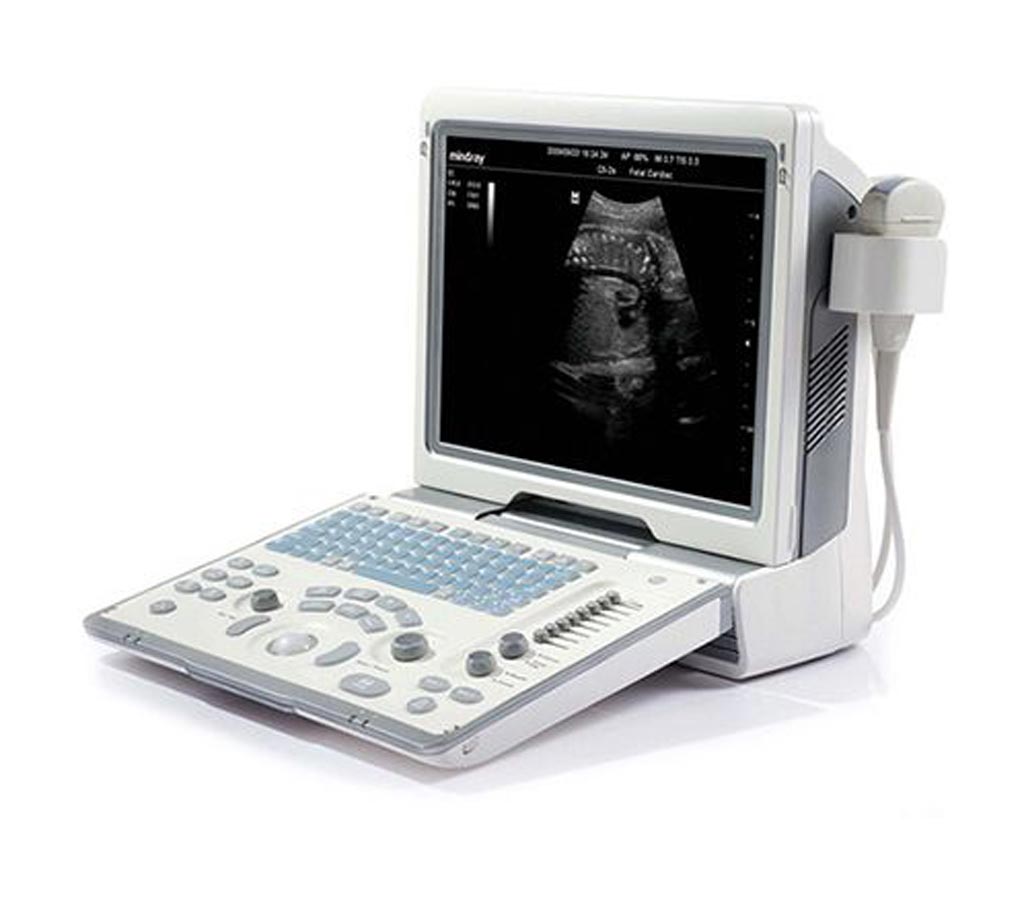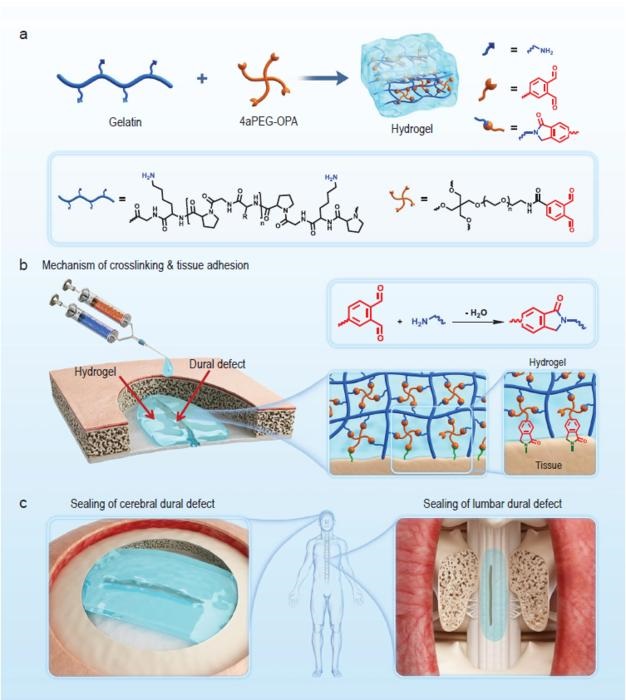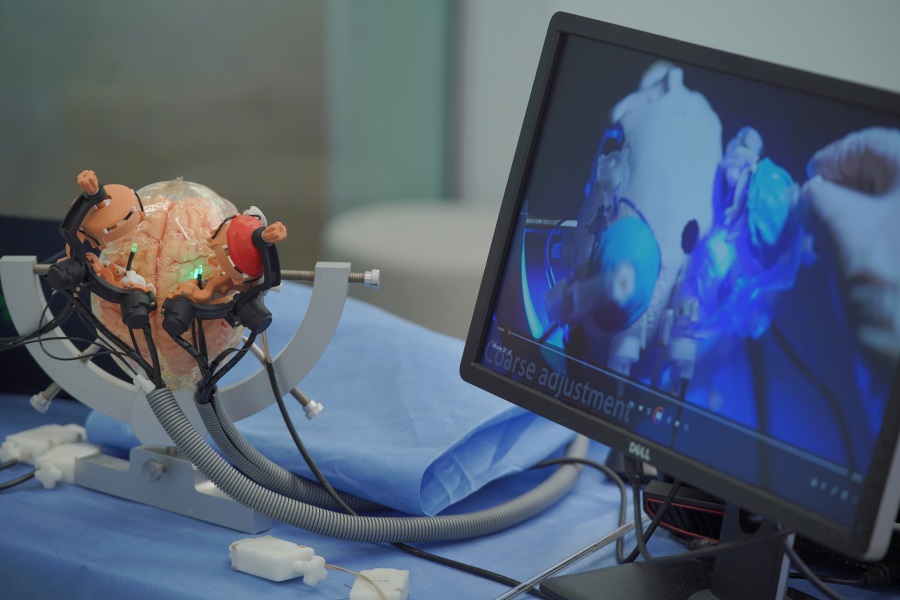Lung Ultrasound Used to Manage Critically Ill COVID-19 Patients Leads to Huge Time Savings as Compared to Chest CT
|
By HospiMedica International staff writers Posted on 22 Jun 2021 |

Image: Mindray DP-50 Portable USG System (Photo courtesy of Mindray)
The use of lung ultrasound allows medical personnel to monitor the progress of COVID-19 patients with considerable time savings as compared to traditional radiology, according to new research.
In their study, researchers from the University of Udine (Udine, Italy) calculated the time necessary to perform lung ultrasound in critically ill COVID-19 patients. Lung ultrasound is a well-established diagnostic tool in acute respiratory failure, and it is particularly suited for identification, grading, and follow-up of lung involvement severity. In critically ill COVID-19 patients, lung ultrasound is an alternative to chest radiography, chest CT or electric impedance tomography to quantify pulmonary impairment, follow lung involvement changes, or predict an intensive care unit (ICU) stay of more than 30 days or death.
Since medical personnel involved in the treatment of COVID-19 patients wear special protective equipment, it increases the workload dramatically through temperature imbalance, touch impairment, communication problems, and visual difficulties. In this specific work scenario, lung ultrasound may be seen as an extra task that can be a loss of time. Researchers conducted a study to see if the use of lung ultrasound would allow them to monitor the progress of COVID-19 patients with considerable time savings as compared to traditional radiology. Using a Philips Affiniti 70 G ultrasound machine with a convex probe, the team calculated the lung ultrasound in 25 patients admitted to the COVID-19 ICU and the time needed to perform the exam. For scanning 25 different patients, the median time was 4.2 minutes (IQR 3.6-4.5).
To quantify the saved time, the researchers measured the time necessary to prepare, transport, perform and return from a chest CT scan with all the protective equipment. The team calculated a median time required for 25 chest CT scans of 85 minutes (IQR 78.5- 97.5). The time saved for each patient using lung ultrasound would have been about 80.8 minutes. Therefore, the researchers concluded that using lung ultrasound instead of CT to monitor critically ill patients with COVID-19, can free medical personnel to perform other duties.
Additionally, the researchers noted that while repeat CT scans may be impractical and unsafe for patients and operators, lung ultrasound may be the default imaging modality for monitoring patients' conditions throughout their hospital stay and after discharge. However, they cautioned that the use of lung ultrasound does not replace the CT scan, which is necessary to exclude pulmonary or cardiovascular complications in case of the clinical worsening of the patient. Ultimately, the researchers performed a daily topographic ultrasound evaluation of the lung without moving the patient, thereby reducing the number of chest X-rays and CT scans and saving considerable time.
Related Links:
University of Udine
In their study, researchers from the University of Udine (Udine, Italy) calculated the time necessary to perform lung ultrasound in critically ill COVID-19 patients. Lung ultrasound is a well-established diagnostic tool in acute respiratory failure, and it is particularly suited for identification, grading, and follow-up of lung involvement severity. In critically ill COVID-19 patients, lung ultrasound is an alternative to chest radiography, chest CT or electric impedance tomography to quantify pulmonary impairment, follow lung involvement changes, or predict an intensive care unit (ICU) stay of more than 30 days or death.
Since medical personnel involved in the treatment of COVID-19 patients wear special protective equipment, it increases the workload dramatically through temperature imbalance, touch impairment, communication problems, and visual difficulties. In this specific work scenario, lung ultrasound may be seen as an extra task that can be a loss of time. Researchers conducted a study to see if the use of lung ultrasound would allow them to monitor the progress of COVID-19 patients with considerable time savings as compared to traditional radiology. Using a Philips Affiniti 70 G ultrasound machine with a convex probe, the team calculated the lung ultrasound in 25 patients admitted to the COVID-19 ICU and the time needed to perform the exam. For scanning 25 different patients, the median time was 4.2 minutes (IQR 3.6-4.5).
To quantify the saved time, the researchers measured the time necessary to prepare, transport, perform and return from a chest CT scan with all the protective equipment. The team calculated a median time required for 25 chest CT scans of 85 minutes (IQR 78.5- 97.5). The time saved for each patient using lung ultrasound would have been about 80.8 minutes. Therefore, the researchers concluded that using lung ultrasound instead of CT to monitor critically ill patients with COVID-19, can free medical personnel to perform other duties.
Additionally, the researchers noted that while repeat CT scans may be impractical and unsafe for patients and operators, lung ultrasound may be the default imaging modality for monitoring patients' conditions throughout their hospital stay and after discharge. However, they cautioned that the use of lung ultrasound does not replace the CT scan, which is necessary to exclude pulmonary or cardiovascular complications in case of the clinical worsening of the patient. Ultimately, the researchers performed a daily topographic ultrasound evaluation of the lung without moving the patient, thereby reducing the number of chest X-rays and CT scans and saving considerable time.
Related Links:
University of Udine
Latest COVID-19 News
- Low-Cost System Detects SARS-CoV-2 Virus in Hospital Air Using High-Tech Bubbles
- World's First Inhalable COVID-19 Vaccine Approved in China
- COVID-19 Vaccine Patch Fights SARS-CoV-2 Variants Better than Needles
- Blood Viscosity Testing Can Predict Risk of Death in Hospitalized COVID-19 Patients
- ‘Covid Computer’ Uses AI to Detect COVID-19 from Chest CT Scans
- MRI Lung-Imaging Technique Shows Cause of Long-COVID Symptoms
- Chest CT Scans of COVID-19 Patients Could Help Distinguish Between SARS-CoV-2 Variants
- Specialized MRI Detects Lung Abnormalities in Non-Hospitalized Long COVID Patients
- AI Algorithm Identifies Hospitalized Patients at Highest Risk of Dying From COVID-19
- Sweat Sensor Detects Key Biomarkers That Provide Early Warning of COVID-19 and Flu
- Study Assesses Impact of COVID-19 on Ventilation/Perfusion Scintigraphy
- CT Imaging Study Finds Vaccination Reduces Risk of COVID-19 Associated Pulmonary Embolism
- Third Day in Hospital a ‘Tipping Point’ in Severity of COVID-19 Pneumonia
- Longer Interval Between COVID-19 Vaccines Generates Up to Nine Times as Many Antibodies
- AI Model for Monitoring COVID-19 Predicts Mortality Within First 30 Days of Admission
- AI Predicts COVID Prognosis at Near-Expert Level Based Off CT Scans
Channels
Artificial Intelligence
view channel
AI-Powered Algorithm to Revolutionize Detection of Atrial Fibrillation
Atrial fibrillation (AFib), a condition characterized by an irregular and often rapid heart rate, is linked to increased risks of stroke and heart failure. This is because the irregular heartbeat in AFib... Read more
AI Diagnostic Tool Accurately Detects Valvular Disorders Often Missed by Doctors
Doctors generally use stethoscopes to listen for the characteristic lub-dub sounds made by heart valves opening and closing. They also listen for less prominent sounds that indicate problems with these valves.... Read moreCritical Care
view channel
AI Doubles Medical Professionals’ Accuracy in Reading EEG Charts of ICU Patients
Electroencephalography (EEG) readings are crucial for detecting when unconscious patients may be experiencing or are at risk of seizures. EEGs involve placing small sensors on the scalp to measure the... Read moreFlexible Device Enables Sweat Gland Stimulation and Simultaneous Biosensing
Human sweat is rich in biomarkers that can be used to monitor a range of health conditions, from diabetes to genetic disorders. Many users prefer sweat sampling over blood collection because it is painless.... Read more
WHO Publishes First Global Guidelines to Reduce Bloodstream Infections from Catheter Use
Up to 70% of all inpatients require a catheter, specifically a peripherally inserted catheter (PIVC), at some point during their hospital stay. Patients who receive treatments via catheters are particularly... Read moreSurgical Techniques
view channel
Study Warns Against Dangerous Smoke Levels Produced During Endoscopic Gastrointestinal Procedures
Healthcare professionals involved in certain smoke-generating endoscopic gastrointestinal procedures, such as those using electrical current to excise polyps, may be exposed to toxin levels comparable... Read more
New Hydrogel Sealant Effective at Sealing Dural Defects and Preventing Postoperative Adhesion
The dura mater is a fibrous membrane of connective tissue that envelops the brain and spinal cord. In neurosurgical procedures that require access to the brain or spinal cord, opening the dura mater often... Read more
MRI-Guided Multi-Stage Robotic Positioner Enhances Stereotactic Neurosurgery Precision
Magnetic resonance imaging (MRI) offers significant benefits in neurosurgery, providing detailed 3D visualizations of neurovascular structures and tumors. Traditionally, its use has been restricted to... Read morePatient Care
view channelFirst-Of-Its-Kind Portable Germicidal Light Technology Disinfects High-Touch Clinical Surfaces in Seconds
Reducing healthcare-acquired infections (HAIs) remains a pressing issue within global healthcare systems. In the United States alone, 1.7 million patients contract HAIs annually, leading to approximately... Read more
Surgical Capacity Optimization Solution Helps Hospitals Boost OR Utilization
An innovative solution has the capability to transform surgical capacity utilization by targeting the root cause of surgical block time inefficiencies. Fujitsu Limited’s (Tokyo, Japan) Surgical Capacity... Read more
Game-Changing Innovation in Surgical Instrument Sterilization Significantly Improves OR Throughput
A groundbreaking innovation enables hospitals to significantly improve instrument processing time and throughput in operating rooms (ORs) and sterile processing departments. Turbett Surgical, Inc.... Read moreHealth IT
view channel
Machine Learning Model Improves Mortality Risk Prediction for Cardiac Surgery Patients
Machine learning algorithms have been deployed to create predictive models in various medical fields, with some demonstrating improved outcomes compared to their standard-of-care counterparts.... Read more
Strategic Collaboration to Develop and Integrate Generative AI into Healthcare
Top industry experts have underscored the immediate requirement for healthcare systems and hospitals to respond to severe cost and margin pressures. Close to half of U.S. hospitals ended 2022 in the red... Read more
AI-Enabled Operating Rooms Solution Helps Hospitals Maximize Utilization and Unlock Capacity
For healthcare organizations, optimizing operating room (OR) utilization during prime time hours is a complex challenge. Surgeons and clinics face difficulties in finding available slots for booking cases,... Read more
AI Predicts Pancreatic Cancer Three Years before Diagnosis from Patients’ Medical Records
Screening for common cancers like breast, cervix, and prostate cancer relies on relatively simple and highly effective techniques, such as mammograms, Pap smears, and blood tests. These methods have revolutionized... Read morePoint of Care
view channel
POCT for Infectious Diseases Delivers Laboratory Equivalent Pathology Results
On-site pathology tests for infectious diseases in rural and remote locations can achieve the same level of reliability and accuracy as those conducted in hospital laboratories, a recent study suggests.... Read more
Cartridge-Based Hemostasis Analyzer System Enables Faster Coagulation Testing
Quickly assessing a patient's total hemostasis status can be critical to influencing clinical outcomes and using blood products. Haemonetics Corporation (Boston, MA, USA) has now obtained 510(k) clearance... Read more
Critical Bleeding Management System to Help Hospitals Further Standardize Viscoelastic Testing
Surgical procedures are often accompanied by significant blood loss and the subsequent high likelihood of the need for allogeneic blood transfusions. These transfusions, while critical, are linked to various... Read moreBusiness
view channel
MEDICA INNOVATION FORUM for the Healthcare Innovations of the Future
By always offering innovations and updating existing program formats, the internationally leading medical trade fair MEDICA in Düsseldorf has been successful for over half a century and always gives its... Read more
















